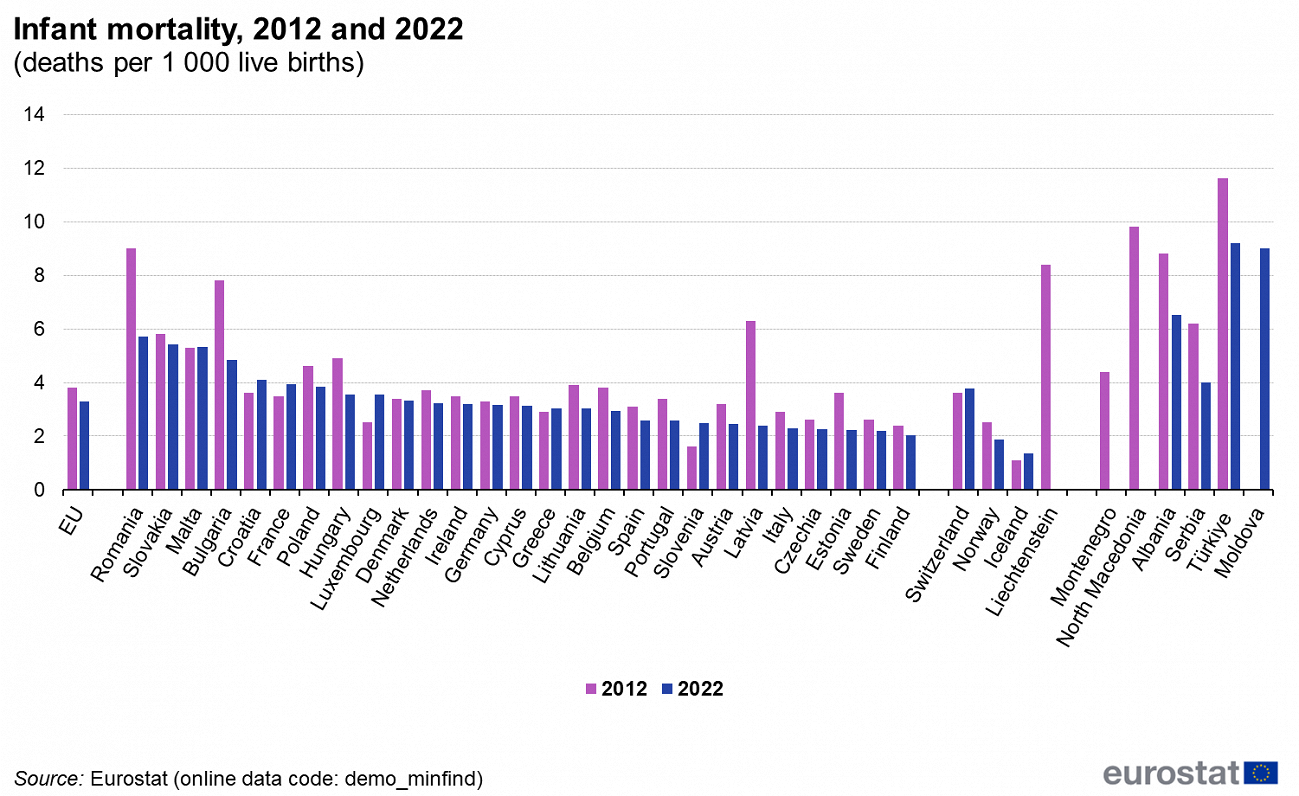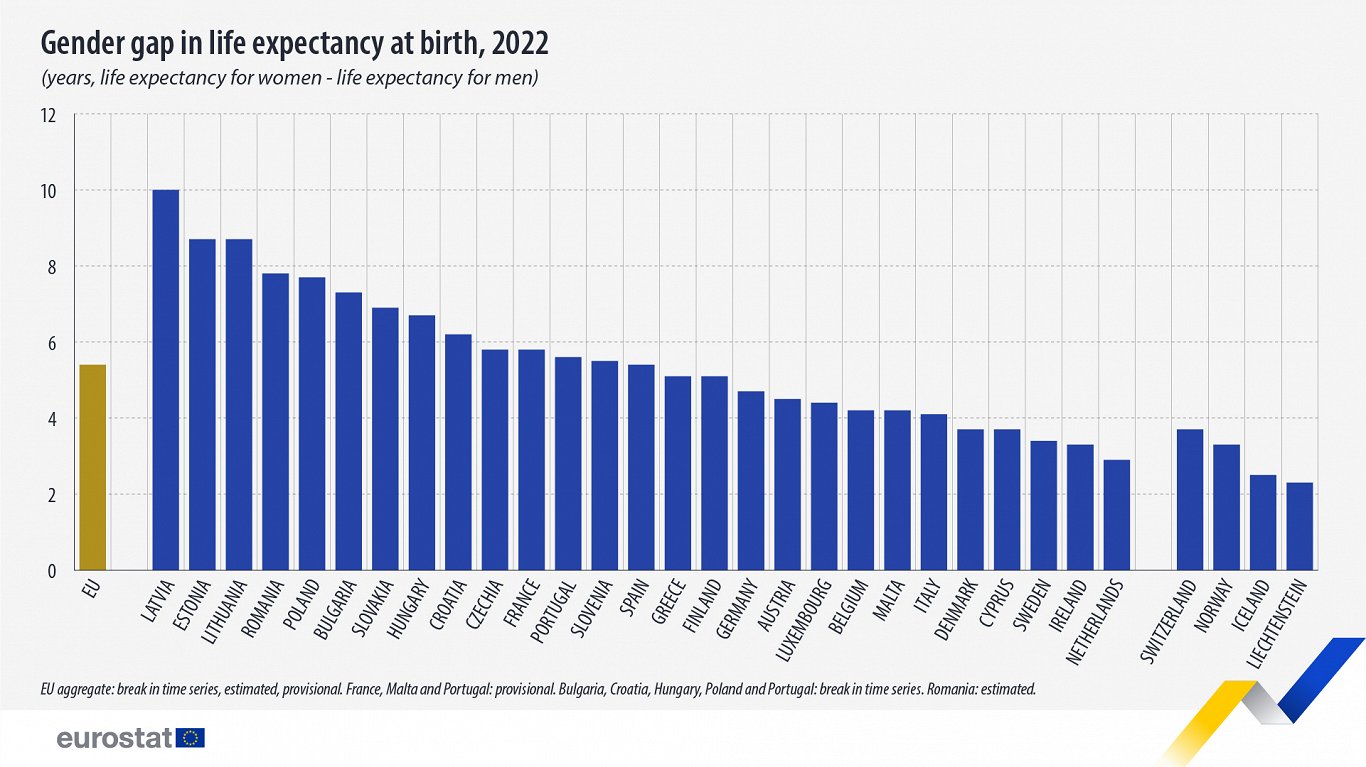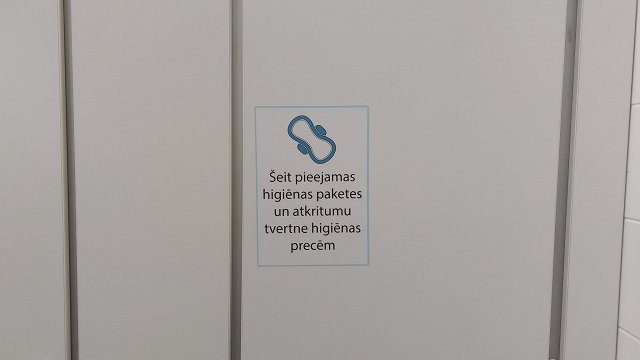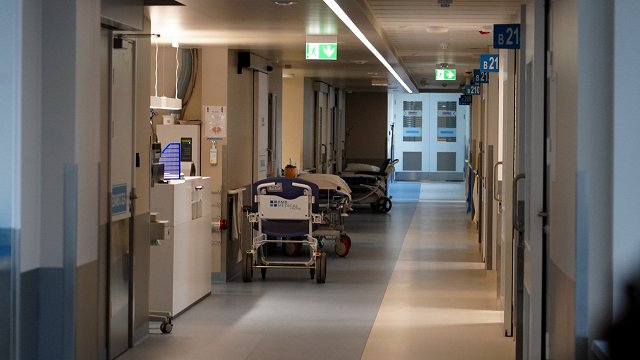In 2022, average life expectancy at birth in the EU was 80.6 years, up by 0.5 years from 2021. Over two decades, since 2002, the highest value was recorded in 2019 when life expectancy at birth reached 81.3 years (up 3.7 years compared with 2002). However, after the outbreak of the COVID-19 pandemic, this indicator declined to 80.4 in 2020 and to 80.1 years in 2021. In 2022, life expectancy at birth in the EU rose but did not yet reach the 2019 value.
Longest life expectancy is in Madrid
Latvia's average life expectancy stands at 74.5 years, Lithuania's at 75.6 years and Estonia's at 78.1 years.
The EU region with the highest life expectancy at birth was the Spanish region of Comunidad de Madrid (85.2 years), followed by Provincia Autonoma di Trento in Italy (84.4 years), Ile de France in France (84.1 years), Stockholm in Sweden (84.0 years), and Comunidad Foral de Navarra in Spain (83.9 years).
Source dataset: demo_r_mlifexp
On the other hand, among 5 EU regions with the lowest life expectancy at birth, 4 were in Bulgaria: Severozapaden (72.3 years), Severen tsentralen (73.2 years), Yugoiztochen (73.7 years), Severoiztochen (74.1 years); and one in Hungary, Észak-Magyarország (74.1 years).
However, it is the disparity between male and female life expectancy where Latvia really stands out.
For women in the EU, life expectancy at birth stood at 83.3 years in 2022 and for men at 77.9 years. Life expectancy at birth for women in the EU was 5.4 years longer than that for men, with variations between EU countries. In Latvia, women were expected to live 10.0 years longer than men, followed by Estonia and Lithuania (both 8.7 years).
The smallest gender gaps were in the Netherlands (2.9 years), Ireland (3.3 years), and Sweden (3.4 years).
One encouraging sign included in the figures was a massive improvement in infant mortality rates in Latvia over a ten year period from 2012 to 2022, as is clear from the graph below.


























